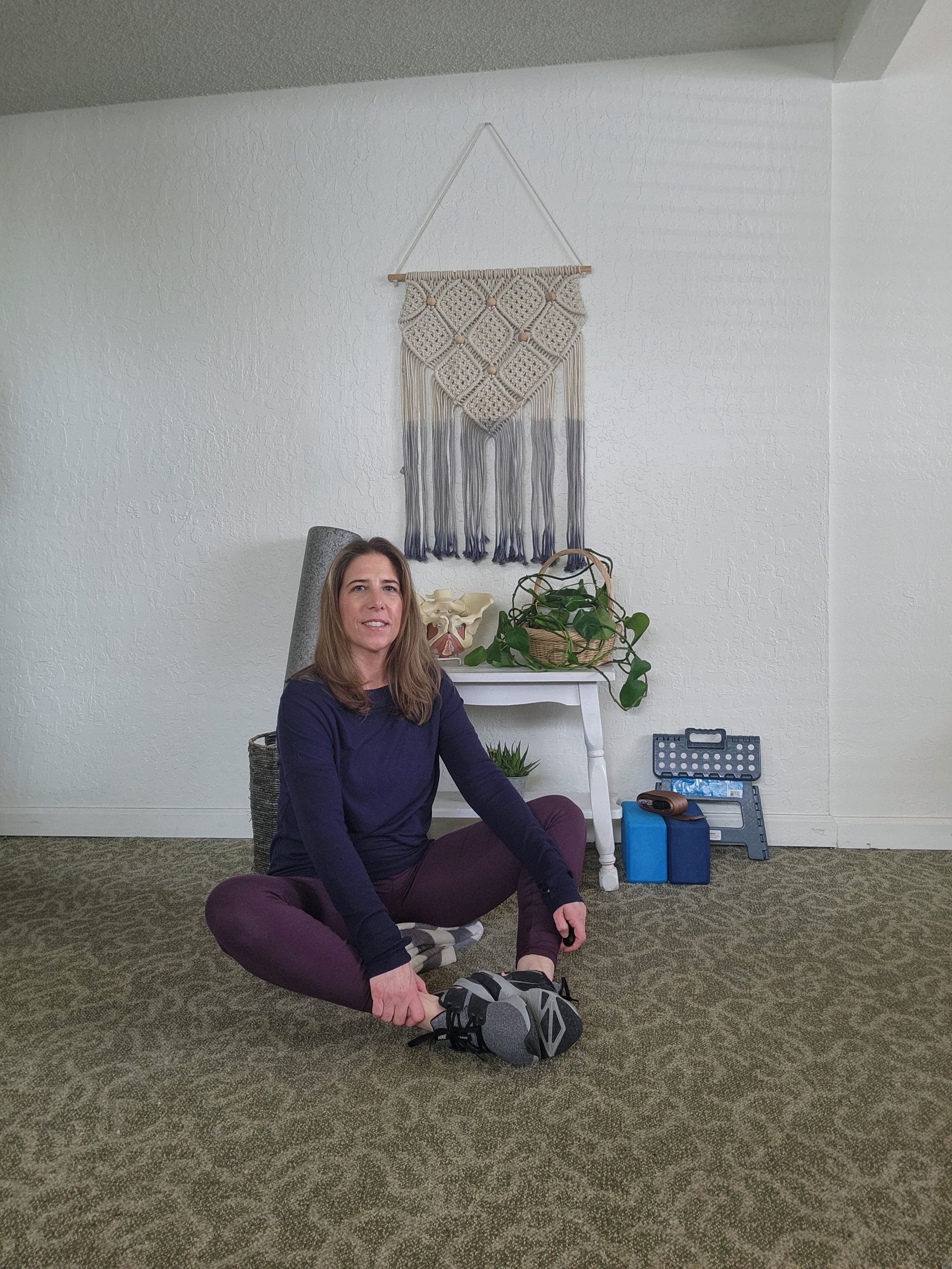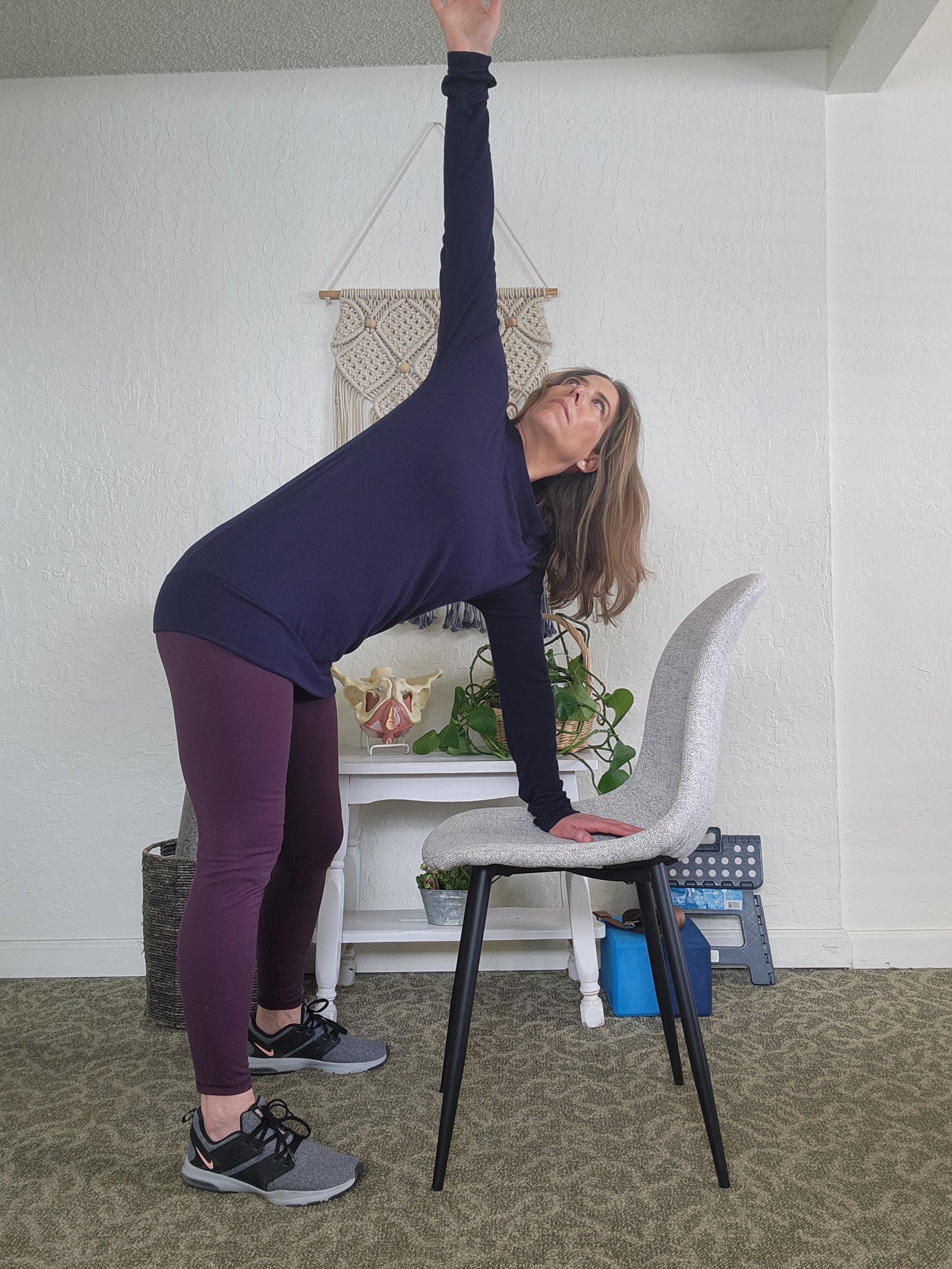Preparing for Labor and Birth: How a Pelvic Floor Physical Therapist Can Help
If you or someone you know is pregnant and have heard of pelvic floor physical therapy as an option for prenatal care, but are unsure WHAT exactly a pelvic floor physical therapist is for during your pregnancy, this blog post is for you!
Pregnancy and Pelvic Floor Physical Therapy
While there are many reasons to see a pelvic floor PT if you are having any adverse symptoms (low back pain or dysfunction, pelvic pain or dysfunction, sciatic pain, etc.), there are also some very good reasons to see a pelvic floor PT as a pregnant person even WITHOUT any negative symptoms. And one of the biggest reasons is to learn, practice, and prep for the labor and birth experience, which we refer to as our “Birth Prep” program.
Planning for Labor and Birth
Many who are pregnant have discussions with their healthcare provider about what it is they want during their labor, birth and maybe even early postpartum time - they discuss their goals, vision of how they would like the experience to go and they try to think out some of the details ahead of time. I think we are all aware that even the best thought out plans don’t always happen the way we would like due to the uncontrollables, but what about the controllables?
What if you had the knowledge and education ahead of time to prepare yourself for the different stages of labor? What if you had been practicing different ways to connect with your breath so that you weren’t trying to learn in the middle of a totally new and intense experience? What if you had been practicing and learning different techniques for pain management? What if you had been stretching and strengthening the various parts of your body that are going to need to be on point during labor and birth? And what if you had an extra support person there for you during your pregnancy to help you, encourage you and show you step by step how to do all of these things and prep for an amazing and empowering labor and birth experience?? What if…
What You Can Expect for Getting Started With Birth Prep
If you are interested in seeing one of our pelvic floor physical therapists during your pregnancy for birth prep, you can expect to start with a 90 minute, 1-on-1 visit with your specially trained pelvic floor physical therapist who will perform a thorough evaluation taking the full body approach. This just means that they are not going to ONLY focus on your pelvic and abdominal region because you are there for your pregnancy, they are also going to look at your posture, upper body and lower body and assess for any tissue restrictions, weakness, pain, instability or hyperactivity. They will also spend a significant amount of time talking with you about your past medical history, how your pregnancy has been going, any current issues or concerns to be aware of and what your goals are for your labor and birth experience.
What to Expect With a Birth Prep Treatment Session
After your initial evaluation has taken place, you will then be scheduled for 60 minute, still 1-on-1 visits with the same pelvic floor physical therapist you saw in your first appointment. The frequency of visits and the spacing between your appointments will be dependent on how far along in your pregnancy you are and your individual treatment plan and goals.
While the specifics of what is covered in your treatment sessions will also be dependent on those same factors listed above, there are two topics that we will go into further detail about here and will be covered during your birth prep experience, which are breathing and movement.
Birth Prep and Breathing
While the topic of breathing may seem like an intuitive thing to be able to do, it really is something that can be taught to utilize as a coping strategy to help you stay focused, calm and centered during your labor and birth. Because of this, breathing is a major focus during our birth prep sessions.
There are many different techniques and styles of breathing, all with a different purpose that is specific to the stage of labor you are in. The following is a list of how the breathing phases can correspond with the stages of labor and how the breathing purpose and style changes with each phase to support the desired outcome of that phase:
Pre-Labor Prep
This is where we come in! Prior to your labor starting, we are here to walk you through ALL the prep work that goes into learning the various breathing styles and types as well as to help you practice utilizing different breathing techniques to help you through labor and even how to use your breath to support the active and pushing stages of labor.
Breathing Through the Early Stages of Labor
This is the stage where labor has just started and continues until contractions are intense enough that you can no longer walk or talk through them. Breathing during this stage is meant to help you remain relaxed and calm.
Breathing Through the Active to Very Active Stages of Labor
In a stage of labor where you may start to feel out of control, your breathing is there to remind you that you have full control of your breathing, and that is your focus! There are several different techniques and styles that we teach in order to allow you to feel connected to baby and/or partner, remain calm and allow this stage to be productive for you!
Breathing Through the Very Active Transition Stage of Labor
This phase of labor can become very intense and your breathing style will start to incorporate vocalization and finding a pattern and rhythm that works for you to remain focused, calm and relaxed through it. Certain types of vocalization that we walk you through can actually help to support and encourage a relaxed pelvic floor - which is necessary for opening and allowing baby to exit.
Breathing Through the Resting Phase
The resting phase is a very important phase that you will want to capitalize on! We teach you how best to do that with using your breath to assist in the recovery/rest phases throughout your labor and birth.
Breathing Through the Active Phase - Pushing!
This may be the one you’ve been waiting for or the one that you most think of needing to know how to push with the correct breathing technique, but here’s something you maybe don’t know…there is no ONE way to breathe and push! In our push prep program, we actually will go through 6 different types of breathing/pushing that you may want to incorporate during that time and depending on the type of birth you end up experiencing. These 6 types include:
Spontaneous pushing
Directed pushing
J Breathing
Breathing through the crowning phase
Breathing through the placental phase
Breathing during a Cesarean birth
Birth Prep and Movement
Aside from breathing prep for labor and birth, another great way to prepare yourself is by specific and individualized movements! In our birth prep program we walk you through various positions and movements you can incorporate to start preparing your body for the full birth experience.
If you are wondering how much prepping your body with movement can really help to prepare you, consider it like this…if you signed up for your first marathon, wouldn’t you want to prepare your body for the event? Or would you simply show up on the day and do your best with the 26.2 miles? I think most of us would want to prepare for an event that is going to be extremely challenging and will push our body to a point that it has never been before, right? Which is why incorporating a movement plan into your pregnancy can be so beneficial - not just for the labor and birth itself, but also for the recovery afterwards!
While we do have a program mapped out for specific stretches and movements to be incorporated, each movement can be customized and modified to fit you and where you are currently at!
A few examples of some movements we do like to have our pregnant patients incorporate and start with include:
1. Butterfly Stretch - Sit on a folded blanket to get your hips a little higher than your knees, start with hips open wide and touching the soles of your feet, then move to a position where your knees are up and you’re hugging your knees. Hold for 1-2 minutes each.
Alternative option: If sitting upright isn’t comfortable, lean back into an inclined position by using pillows or a wedge (as pictured on the far right) and maintaining the butterfly position.
2. Seated Piriformis Stretch - Sitting in a chair, cross one ankle over the opposite knee. Keep a comfortable stretch from the outer thigh and into the buttocks. Perform 5 sets both sides, 1-2 minutes each side.
3. Kneeling Lunge - Starting on all 4’s, move one leg up, hips open, wide and comfortably, diagonally rocking, 5 sets each side.
Can also modify this to a standing position, as pictured on the right.
4. Squat - Using a yoga block or foot stool, rest your pelvis on block, hips open wide (sumo squat position), if legs hurt, use a higher surface, progress to a lower surface as able. Stay low for 1-2 minutes and 2-3 daily.
A few other movements to work into can include:
1. Standing Windmill - Place hands on a chair in front of you, comfortable position for your low back, untuck your tailbone, balancing with one hand on chair, sweep other arm away from body and towards the ceiling, allow body to rotate comfortably for 10x each side and progress to lower surface as able to (yoga block or foot stool).
2. Standing Forward Lunge - Place one knee in front, knee bent, then slowly bend your back knee, come up and down for a few reps. Remain on the ball of your back foot for 5 repetitions alternating legs. You can use a chair or solid surface to hold onto in front.
3. Cat/Cow - For 10 breaths, inhale, look up and let back/belly sag, then exhale and let your back round up.
4. Seated Hamstring/Leg Stretches - Sit on folded blanket, legs apart, reach forward gently between legs, exhaling as you fold forward, return to upright and perform a gentle rotation side to side.
5. Single Leg Stretch - Use a strap on your foot with your leg extended and your opposite knee bent, then gently pull on the strap bringing your toes towards your body.
6. Ball Squeezes at Knee and Thigh - Start at the knees, then move up to the thighs, exhale slowly and gently squeeze the ball, inhale and rest and repeat 10 times.
Remember to always listen to your body. If something doesn’t feel right or is painful, STOP. If you are unsure about movement in general with your pregnancy, make sure to discuss this with your provider.
Advanced Pelvic and Spine Physical Therapy
If labor and birth is something you are looking for support and guidance with, we are here to help! If you are pregnant or are thinking about becoming pregnant and are local to the Reno, Nevada area, and you’re wondering if birth prep and pelvic floor physical therapy is right for you, book an appointment today or reach out with any questions.

















